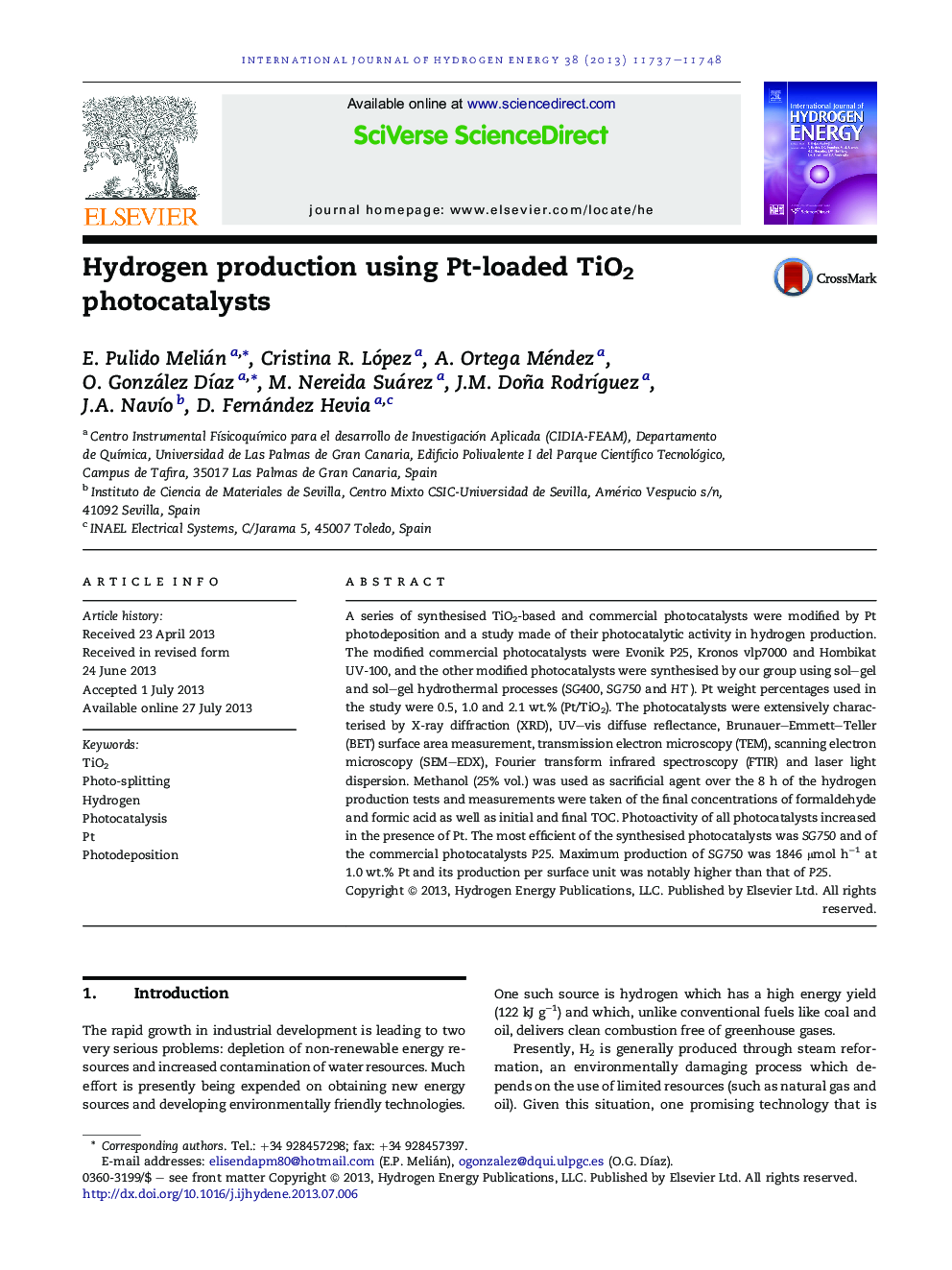| Article ID | Journal | Published Year | Pages | File Type |
|---|---|---|---|---|
| 1274889 | International Journal of Hydrogen Energy | 2013 | 12 Pages |
•Hydrogen obtained in the presence of Pt was >100 times higher than in its absence.•FTIR spectra of the isolated hydroxyl group band show its modification by surface Pt.•Pt clusters on the photocatalysts alter aggregate size distribution.•P25 with 2.1 wt.% Pt displays the highest activity.•Synthesised photocatalyst SG750 also shows competitive results at 1.0 wt.% Pt.
A series of synthesised TiO2-based and commercial photocatalysts were modified by Pt photodeposition and a study made of their photocatalytic activity in hydrogen production. The modified commercial photocatalysts were Evonik P25, Kronos vlp7000 and Hombikat UV-100, and the other modified photocatalysts were synthesised by our group using sol–gel and sol–gel hydrothermal processes (SG400, SG750 and HT). Pt weight percentages used in the study were 0.5, 1.0 and 2.1 wt.% (Pt/TiO2). The photocatalysts were extensively characterised by X-ray diffraction (XRD), UV–vis diffuse reflectance, Brunauer–Emmett–Teller (BET) surface area measurement, transmission electron microscopy (TEM), scanning electron microscopy (SEM–EDX), Fourier transform infrared spectroscopy (FTIR) and laser light dispersion. Methanol (25% vol.) was used as sacrificial agent over the 8 h of the hydrogen production tests and measurements were taken of the final concentrations of formaldehyde and formic acid as well as initial and final TOC. Photoactivity of all photocatalysts increased in the presence of Pt. The most efficient of the synthesised photocatalysts was SG750 and of the commercial photocatalysts P25. Maximum production of SG750 was 1846 μmol h−1 at 1.0 wt.% Pt and its production per surface unit was notably higher than that of P25.
Graphical abstractFigure optionsDownload full-size imageDownload as PowerPoint slide
